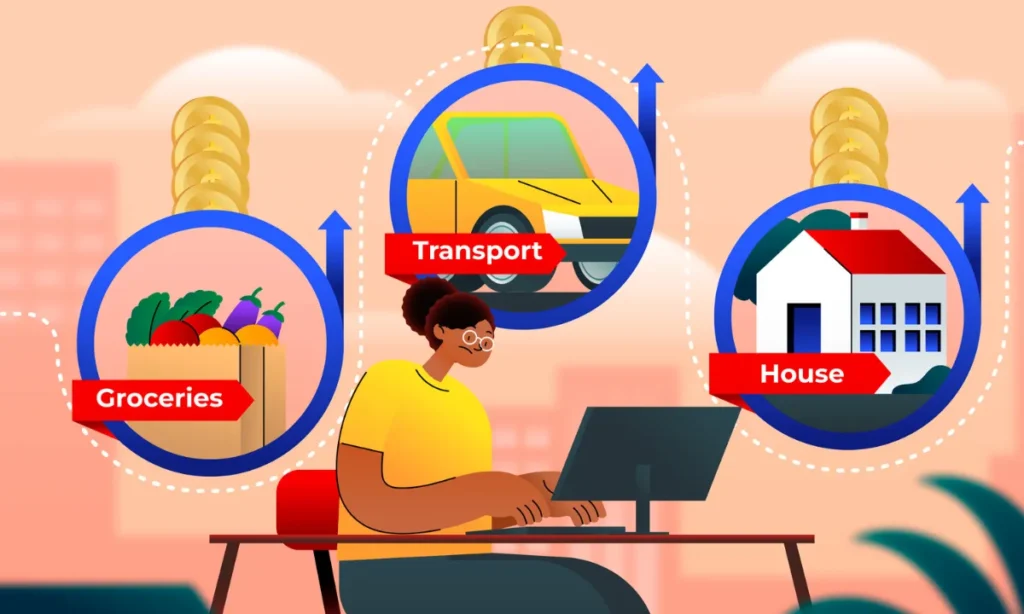Gig economy has revolutionized the way in which millions of individuals are working, providing them with the flexibility and independence that is sometimes not achievable through a traditional job. Gig workers are included in the modern labor force, be it rideshare drivers or freelance designers. However, as we progress into 2025, a question arises that is of utmost importance, did this thriving industry hit its limit?
Recent statistics show that the gig economy is at the growing pains phase. As it keeps growing, it is getting harder to deny issues of market saturation, employee burnout and economic sustainability. Platforms are finding it difficult to remain profitable and workers are experiencing higher competition and rates are falling.
This discussion will focus on the present situation in the gig economy, whether it will be able to continue its developmental trend or whether a complete change is necessary to make it sustainable in the long run both to the platforms and the workers.
The Current State of Gig Work
The gig economy is a broad spectrum of services, which include transportation and food delivery, professional consulting and creative services. Large websites such as Uber, DoorDash, Upwork, and Fiverr have established environments in which millions of employees can sell their skills and time on their own terms.
The situation is, however, not the same as it was five years ago. The maturation of the market has created more competition among the workers especially in the trending category such as graphic design, writing, and delivery services. A large number of gig workers complain of forced rate reduction or increased hours to sustain income.
The pandemic led to a surge in the demand of gig services initially but the post-pandemic economy has been a new challenge. The increase in the cost of living, fuel price and the platform fee has strained the income of workers and the consumers are more price-conscious.
Signs of Market Saturation

There are a number of signs that particular areas of the gig economy are becoming saturated. Depending on the time of day, supply of rideshare and delivery drivers can far exceed demand in large metropolitan areas, resulting in longer wait times between trips and lower hourly pay.
This is also occurring to freelance platforms. New workers entering the industry and the speed accelerated by the pandemic led to high competition over projects. According to many well-established freelancers, clients are now demanding more work at cheaper rates and it is hard to earn a living wage.
Saturation concerns also can be found in platform economics. A large number of the gig economy businesses are still making losses, funding the wages of workers as well as discounting their customers to retain market share. Such a model is becoming harder and harder to maintain as investors become more impatient and profitability is being squeezed.
Sustainability Challenges Facing Workers
Gig workers experience different sustainability issues that other employees do not. In the absence of benefits provided by employers, employees would have to pay their own health insurance, retirement, and equipment repair. Such expenses can easily kill profits especially in economic crises or health crisis.
The gig work is not predictable either and causes financial insecurity. Income may change significantly depending on the seasonal demand, algorithm or market conditions. Most employees are obliged to work on several platforms at a time only to have a stable income.
Moreover, most gig platforms do not offer career growth opportunities, which makes workers reach the upper limits of earnings. Many of the jobs in the gig economy do not allow much career growth, unlike traditional occupations where experience usually results in increased pay.
Platform Sustainability and Business Models
There is also a sustainability crisis of gig economy platforms. The economics unit of most services are problematic, and the platforms are stuck in a position where they need to keep the prices low to attract users and keep the rates high to retain workers.
There are some platforms trying out new models to enhance sustainability. Subscriptions, premium plans and value-added services are all attempts to get out of the simple charging of transaction fees. Yet, such transformations are commonly challenged by users who are used to low-cost, on-demand services.
There is an additional complexity of the regulatory environment. The pressure to reclassify gig workers as employees instead of independent contractors may radically change the economics of platforms, and render some business models unsustainable in their present form.
Innovation and Evolution Within the Sector
Nevertheless, the gig economy is still evolving through innovation despite the above challenges. Automation and artificial intelligence are starting to streamline the process of matching workers with jobs and could increase efficiency and earnings across the board.
Niche-based platforms are being developed to cater to niche markets, and provide an alternative to the race-to-the-bottom pricing of the larger platforms. These niche markets are more fulfilling in terms of compensation and conditions of work because they are attractive to specific skills or location.
Other platforms are also trying out cooperative forms, in which workers receive equity or increased control over the platform. Such strategies may resolve the issue of sustainability by making workers and platforms more aligned in their interests.
The Path Forward: Adaptation or Transformation?
This ability to move beyond a purely cost-based competition is probably the future of the gig economy. Those platforms that have the ability to drive real value to both customers and workers, as opposed to just enabling transactions at low cost, are more likely to have a sustainable future.
Upskilling and worker education programs may also be useful to overcome entry-level gig saturation and open the way to more valuable service provision. Other platforms are already spending money on training programs to enable workers to acquire new skills and more earning potential.
The landscape can also be changed by policy changes. The advantages of mobility, redesigned labor categories, and new policies can create a more sustainable model of gig work that would not undermine the flexibility that many workers enjoy.
Building a More Sustainable Future
The gig economy can pick. Although the saturation and sustainability issues are genuine, they are not necessarily unconquerable. It will take innovation on the part of platforms, adaption on the part of workers, and possibly new frameworks on the part of policymakers to succeed.
The most promising way forward entails the need to shift the present model of competing through price and convenience. Those platforms capable of generating authentic value propositions, investing in employee success and developing sustainable business models will most likely succeed in the next stage of the evolution of the gig economy.
Diversification, skill building, and platform selection will become more critical to the workers. People who are able to place themselves in less competitive niches or acquire special skills can become more stable and earn more.
The revolution of the gig economy is at its infancy. Although the heady expansion of the early days might be in the past, the capacity of the sector to offer flexible employment opportunities continues to be of value to millions of individuals. The problem is now how to make sure that flexibility is not paid at the expense of financial stability of workers or long-term stability of platforms.








